Liquidity Rebalances
Terminology
$JIMBO periodically rebalances it’s protocol-owned liquidity under different scenarios for efficient capital utilization and smooth price discovery. To understand how these mechanisms work, please familiarize yourself with the following terminology:
Floor Bin: pool bin with the absolute lowest price per token (in ETH) guaranteed by the protocol
Anchor Bin(s): pool bins with concentrated ETH liquidity to support the current market price
Active Bin: pool bin where the price is currently traded (market price)
Token Bin(s): $pool bins containing $JIMBO liquidity where users will buy from
Trigger Bin: the specific pool bin containing $JIMBO liquidity that will trigger a rebalance after it is completely bought out
Liquidity Rebalances
There are three liquidity rebalancing scenarios in the protocol that you should familiarize yourself with: Shift(), Reset(), and Recycle().
-
Shift()moves the floor bin up to the current floor price based on total ETH liquidity and circulating tokens. It will alsoReset()the remaining $JIMBO tokens in the pool. -
Reset()redistributes the remaining $JIMBO tokens in the pool to 50 bins with 1% of the leftover $JIMBO in the pool and 1 bin with 50% of the leftover $JIMBO in the pool. -
Recycle()removes the $JIMBO sold into the floor bin and keeps it in the contract for future redistributions whenReset()is called.
Scenario 1: Shift()
Rebalances ETH Liquidity when Active Bin > Trigger Bin and resets $JIMBO liquidity

At any given time, there is a Trigger Bin 5 bins ahead of the original actively traded bin. Buying $JIMBO from the pool will naturally move the Active Bin past the current Trigger Bin. When the Trigger Bin runs out of $JIMBO, a liquidity rebalance is automatically executed.
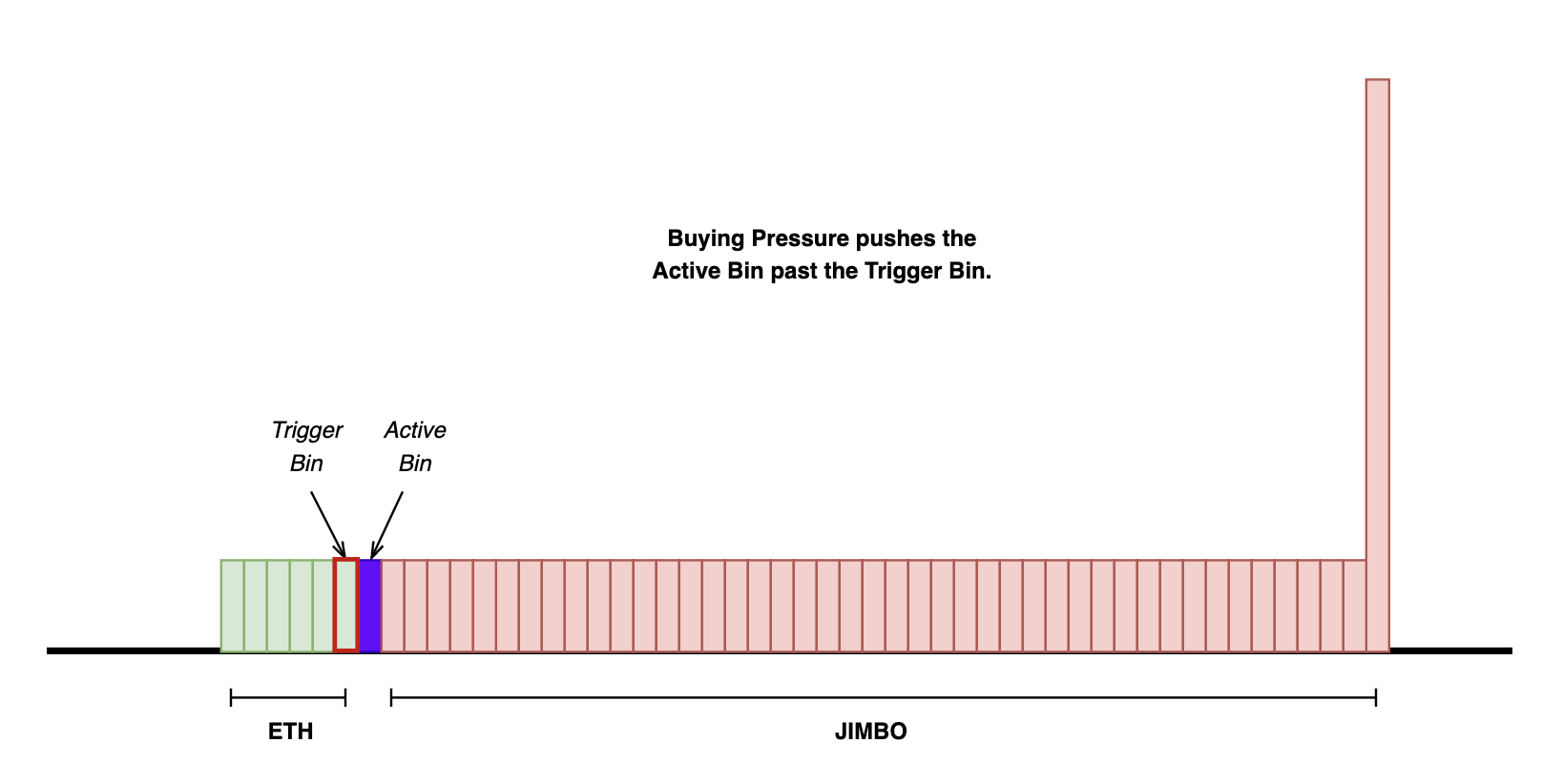
This removes all ETH side liquidity and re-distributes 10% of the total ETH in the pool to Anchor Bins as concentrated liquidity near the current market price, and the remaining 90% of ETH in the pool is used to provide liquidity at the floor price in a single bin (Floor Bin).
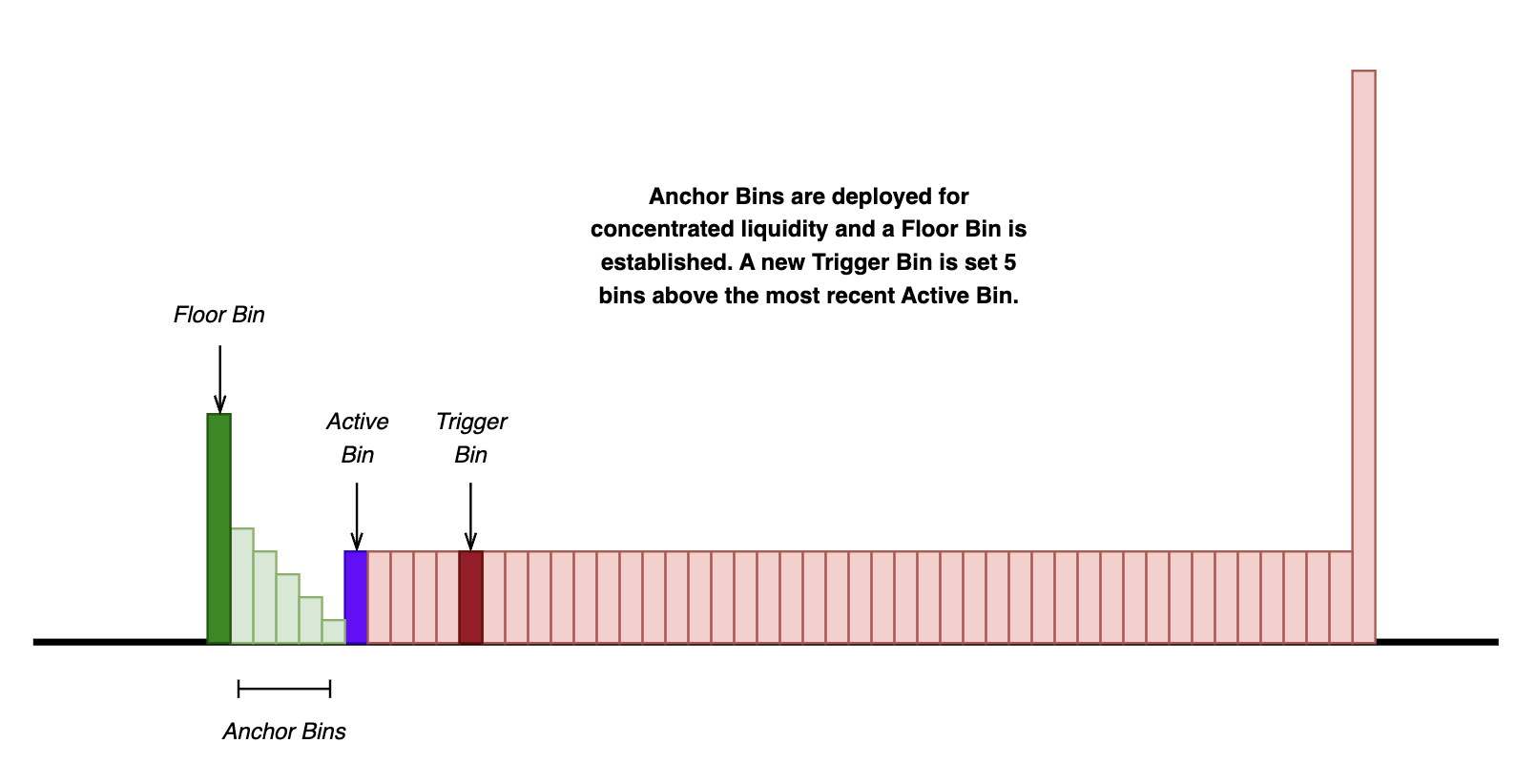
The Anchor Bins are a set of 5 bins next to the Active Bin containing 3%, 2.5%, 2%, 1.5%, and 1% of the total ETH in the pool, respectively. The Anchor Bins provide immediate liquidity to $JIMBO at the most recently traded price to stabilize the market and are arranged to grow in liquidity the further price trades from the currently active bin. The more $JIMBO is sold in the market, the more liquidity is deployed to absorb it.
Scenario 2: Reset()
Rebalances $JIMBO Liquidity when Active Bin < Anchor Bin
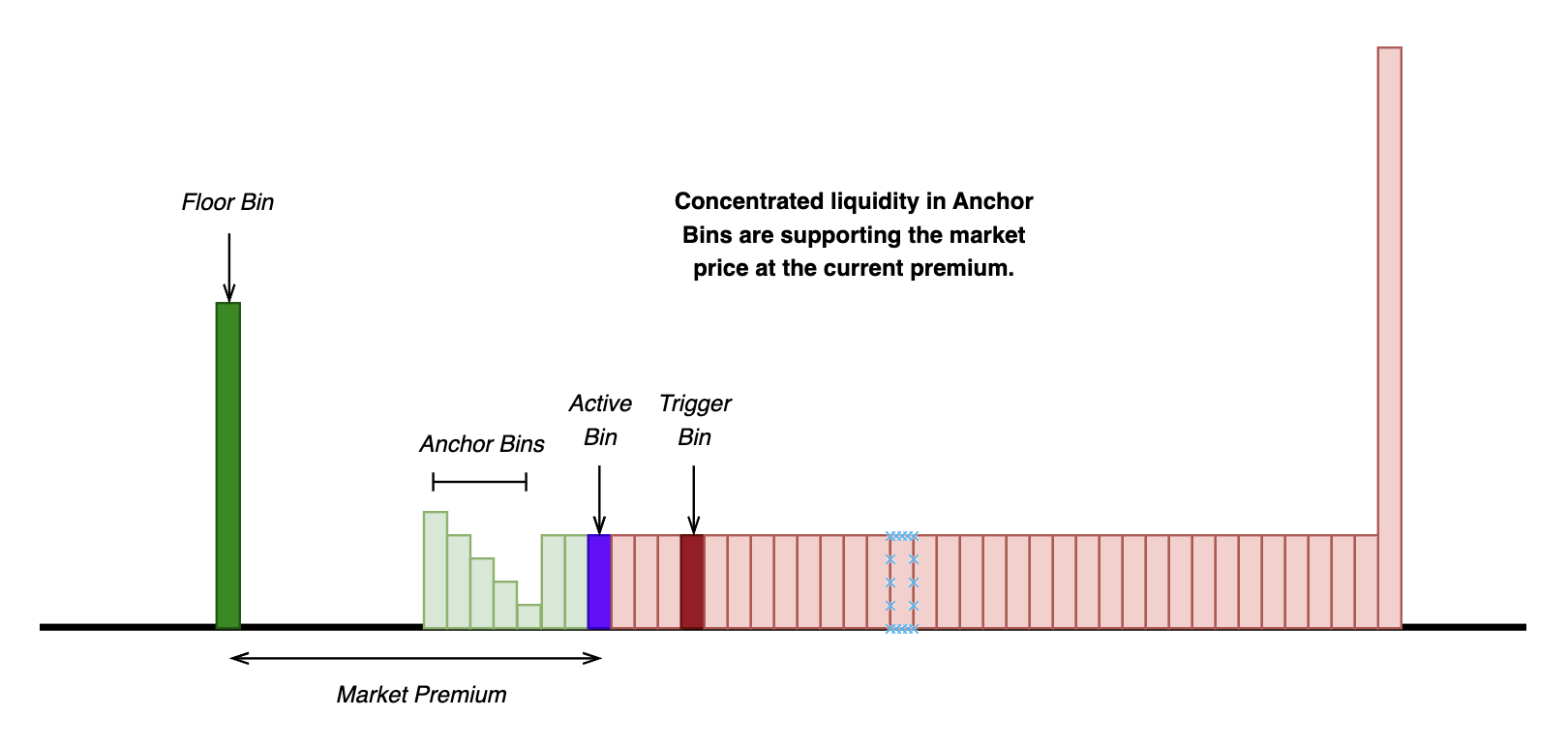
$JIMBO selling into the pool will eat away at liquidity in the Anchor Bins. When all liquidity in the Anchor Bins is depleted, a Reset() is triggered. The protocol interprets this as a sign that the current market price cannot be sustained, so it "starts over": all $JIMBO owned by the protocol is redistributed to the next 51 bins: 1% to the first 50 bins, and 50% to the last bin.
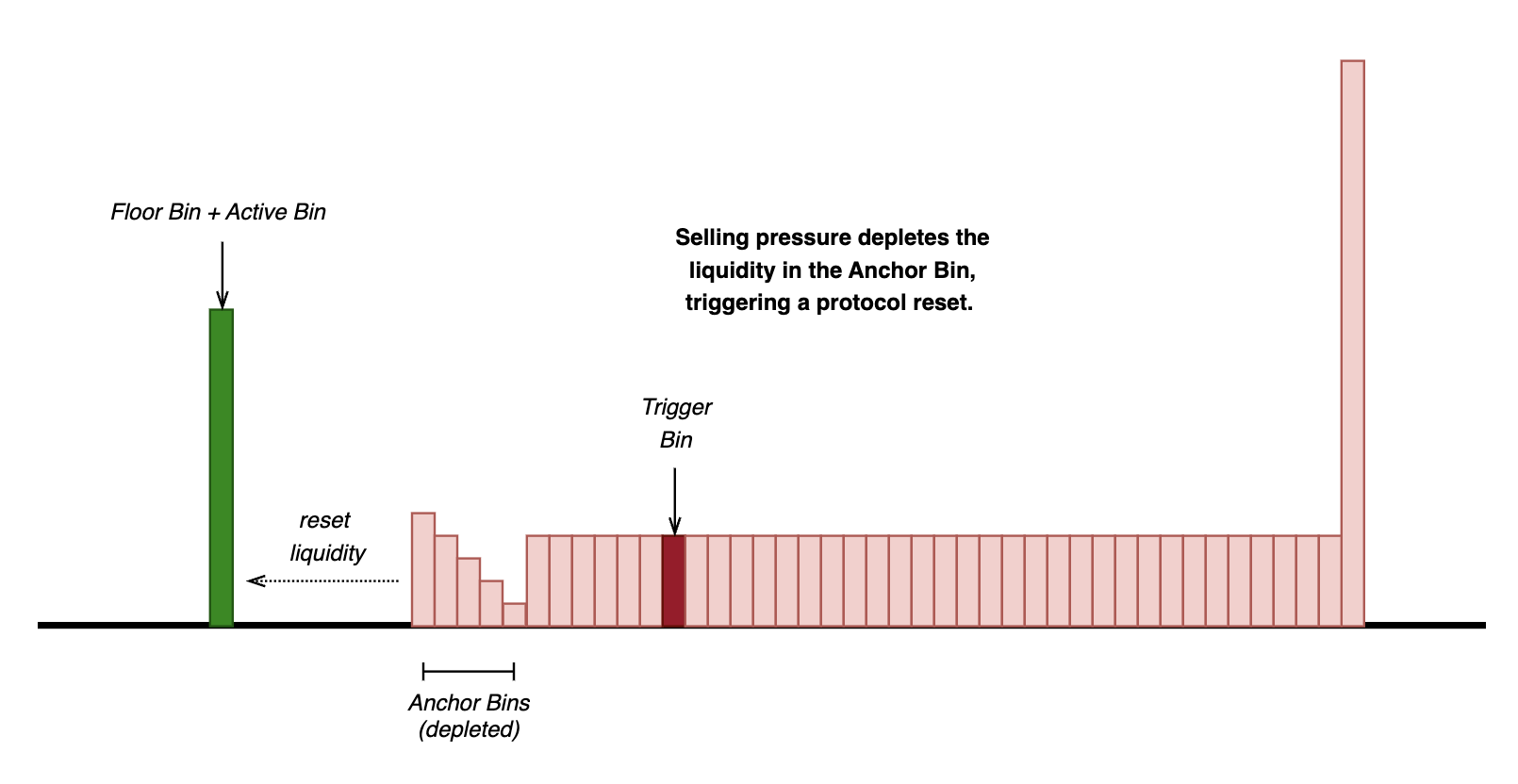
By doing so, the price of $JIMBO resets to the lowest possible price and allows for new organic price discovery to emerge with sufficient liquidity for buyers at the new fair market price. This prevents the $JIMBO price from whiplashing between the floor price and the last purchased bin, with insufficient liquidity to support trading in between the two.
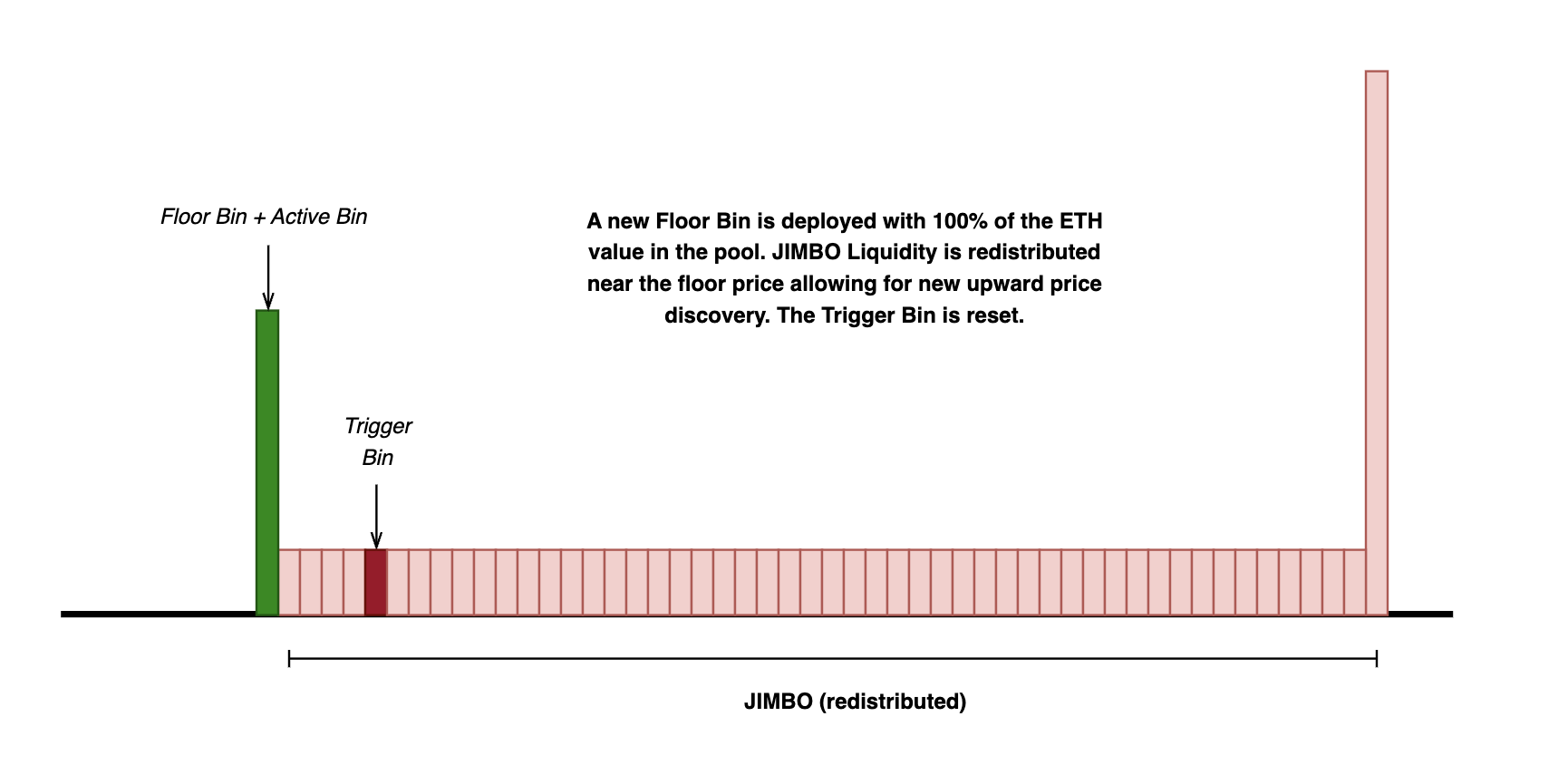
When this happens, Jimbo rebalances the $JIMBO liquidity by taking the protocol-owned $JIMBO in the pool and distributing it across a new set of Token Bins. The remaining ETH in the pool is consolidated into a single Floor Bin based on the current risk-free price, and a new Trigger Bin is set. This allows for healthy upside price discovery of $JIMBO and a new market cycle to begin.
Scenario 3: Recycle()
Removes $JIMBO Tokens from the floor bin when Active Bin = Floor Bin
 New Graphic, Reset state: the protocol is currently trading at floor price, where the floor bin is guaranteeing liquidity for all $JIMBO sales
New Graphic, Reset state: the protocol is currently trading at floor price, where the floor bin is guaranteeing liquidity for all $JIMBO sales
When the Floor Bin is the Active Bin, any sales of $JIMBO are exchanged for ETH at the floor price of the token. Without any actions from the protocol, any $JIMBO sold in this bin would need to be re-bought before the price can move again, and all $JIMBO purchased in this bin would effectively be bought at the risk-free value.

To avoid this scenario and ensure that price can rise again, Jimbo re-hypothecates $JIMBO in the floor bin periodically, moving them to the final token bin to be re-sold at a higher price, ensuring continued growth of the protocol.
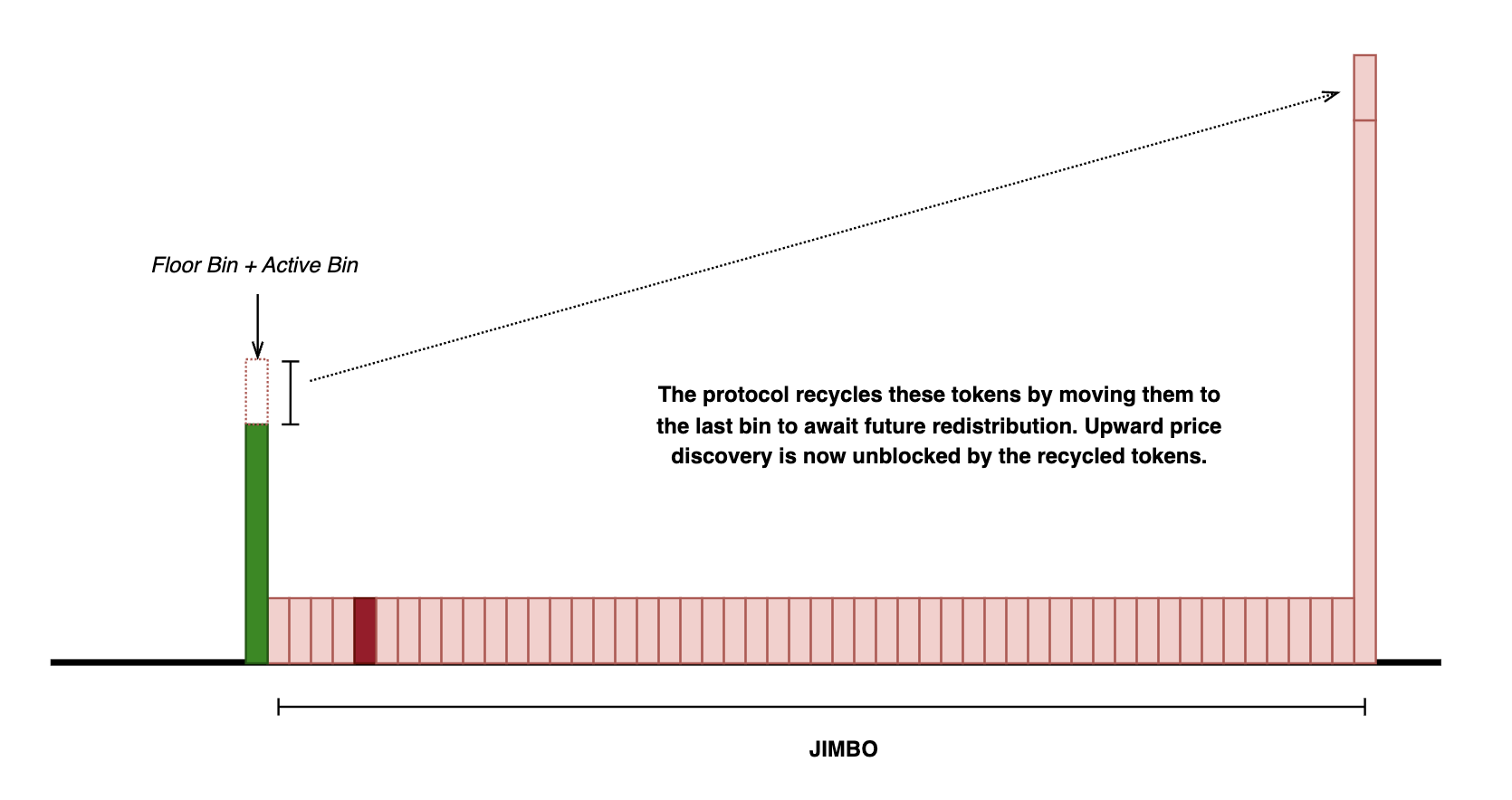
The recycled $JIMBO remains in the contract, but will eventually get redistributed to the Token Bins when a Reset() is triggered again, thickening $JIMBO liquidity of the protocol and creating more potential upside price movement.